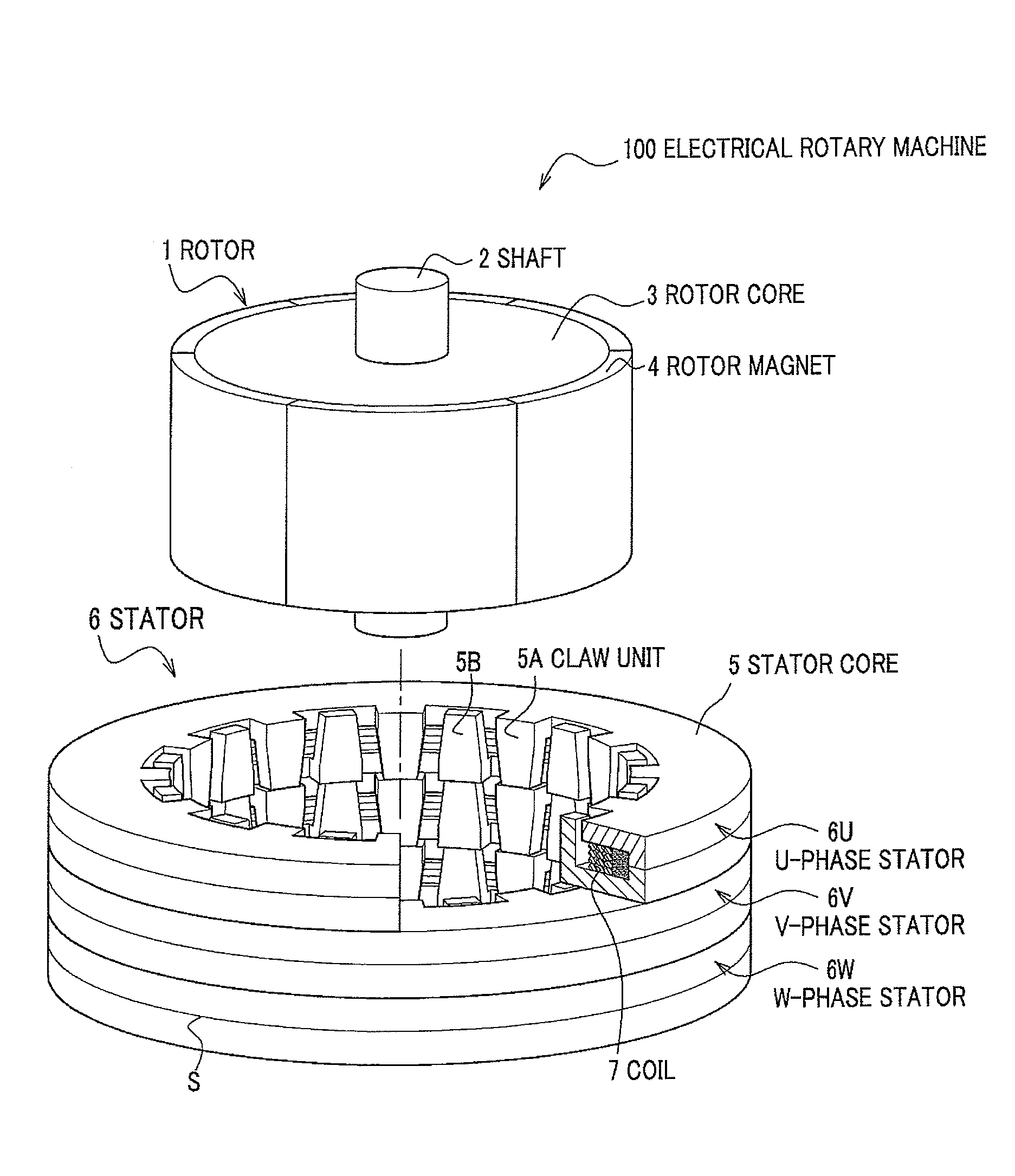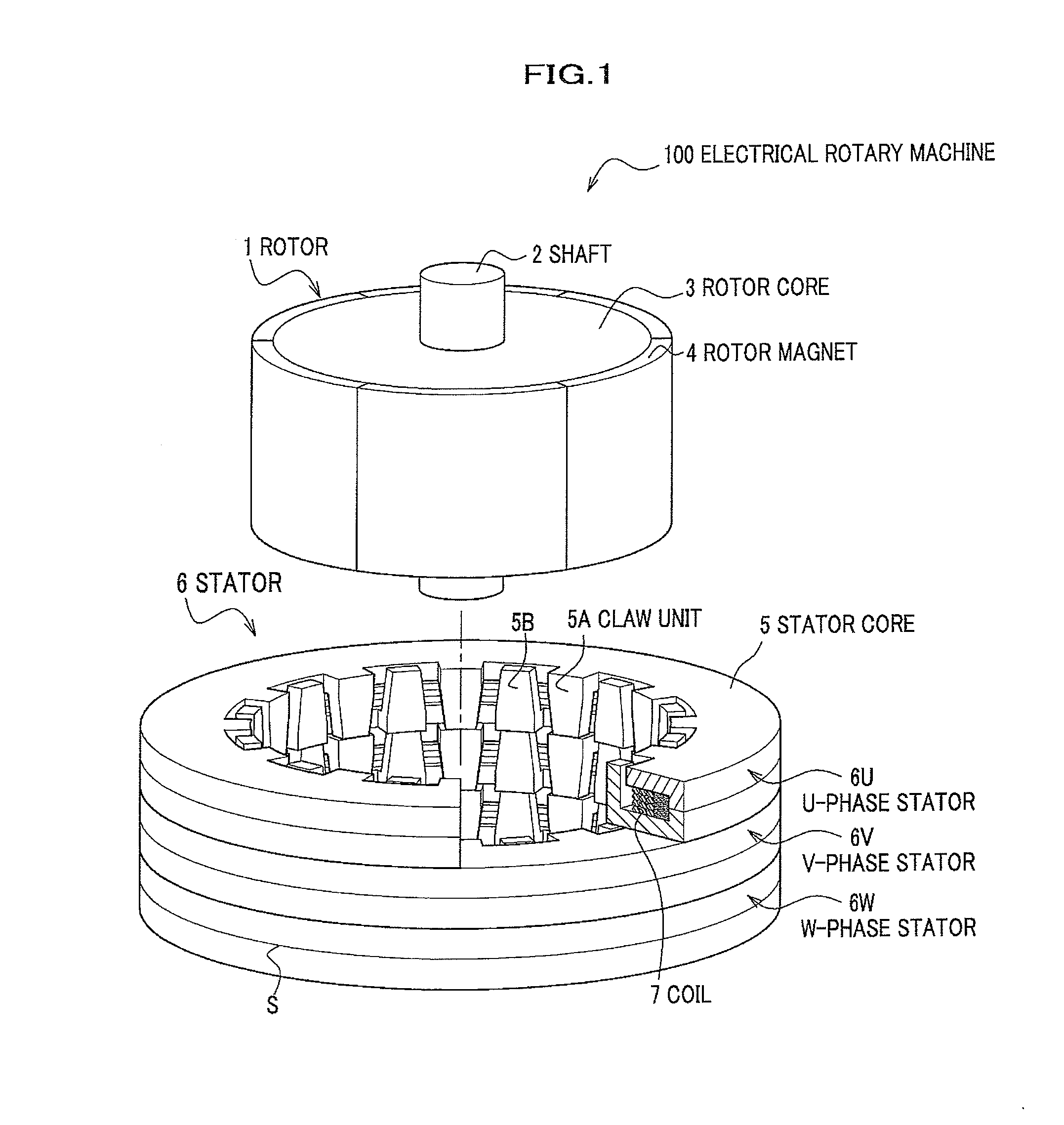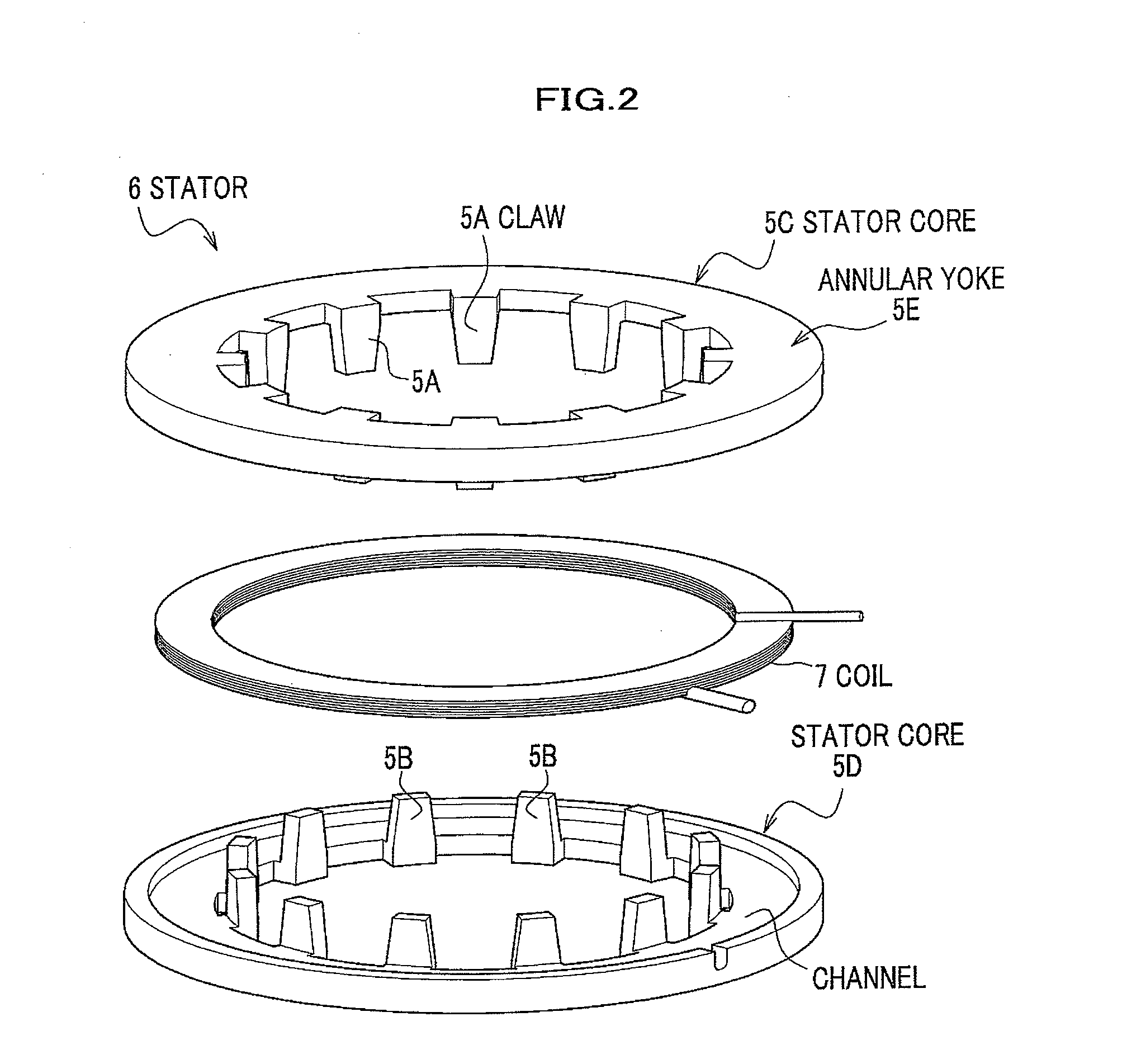Electrical rotary machine and method of manufacturing the same
a technology of electric rotary machines and rotary cores, which is applied in the direction of windings, dynamo-electric components, and magnetic circuit shapes/forms/construction, etc., can solve the problems of reducing heat resistance between the element wires and the cores, and achieves the reduction of the temperature of the element wires, reducing heat resistance, and reducing heat resistance. value
- Summary
- Abstract
- Description
- Claims
- Application Information
AI Technical Summary
Benefits of technology
Problems solved by technology
Method used
Image
Examples
first embodiment
[0023]FIG. 1 shows a three-phase claw-pole electrical rotary machine of a first embodiment of the present invention. The three-phase claw-pole electrical rotary machine includes a stator core of three-dimensional claw-pole structure which allows a reduction in size, achieves a high motor torque, and improves an efficiency of outputting.
[0024]In FIG. 1, an electrical rotary machine 100 includes a rotor 1 and a stator 6 of which three phases (6U, 6V, and 6W) are connected in an axial direction. The rotor 1 includes a shaft 2, a rotor core 3, in which the shaft 2 is inserted, and the even number of rotor magnets 4 disposed on an outer circumferential face of the rotor core 3. The stator 6 includes stator cores 5 (core of the electrical rotary machine) and coils 7. Elements marked with the same number in FIG. 1 are common in other figures.
[0025]FIG. 2 shows a perspective view of a structure of the stator 6. The stator 6 for one of three phases includes two stator cores 5C and 5D which e...
second embodiment
[0041]The claw-pole electrical rotary machine using the coil 7 is described in the first embodiment. An open-slot synchronous machine using a distributed winding coil will be described in a second embodiment.
[0042]The synchronous machine (electrical rotary machine) is driven by an inverter which converts a direct electric power supplied by a battery into an alternate electric power, which is favorable so as to achieve a high output and control a weak magnetic field. It is important for the synchronous machine to obtain a high heat conductivity in order to achieve a high output.
[0043]FIG. 9 shows a cross-sectional view on a plane along the axial direction of rotation of an electrical rotary machine 110 of the second embodiment. As shown in FIG. 9, the electrical rotary machine 110 of the second embodiment includes a stator 21, and a rotor 1 disposed via a vacant space on an inner circumferential side of the stator 21 and held rotatable. The stator 21 and the rotor 1 are held in a hou...
modified embodiment
[0052]The present invention is not limited to the embodiments, but may be modified as described below.
[0053]In the embodiments, the spaces between the stator core 5 and the coils 7 of the stator are impregnated with the resin. A rotator (rotor), in which the coils 7 are wound, can be impregnated with the resin. The rotator core described in claims of the present invention includes the stator core and the rotor core.
[0054]In the second embodiment, the synchronous machine is used, but an induction machine can be applied as well.
PUM
| Property | Measurement | Unit |
|---|---|---|
| diameter | aaaaa | aaaaa |
| power density | aaaaa | aaaaa |
| heat-conductive | aaaaa | aaaaa |
Abstract
Description
Claims
Application Information
 Login to View More
Login to View More - R&D
- Intellectual Property
- Life Sciences
- Materials
- Tech Scout
- Unparalleled Data Quality
- Higher Quality Content
- 60% Fewer Hallucinations
Browse by: Latest US Patents, China's latest patents, Technical Efficacy Thesaurus, Application Domain, Technology Topic, Popular Technical Reports.
© 2025 PatSnap. All rights reserved.Legal|Privacy policy|Modern Slavery Act Transparency Statement|Sitemap|About US| Contact US: help@patsnap.com



